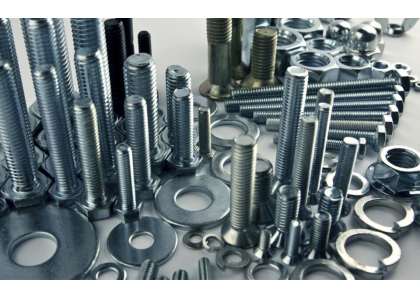
Most of the screw fasteners do surface plating treatment, so what is plating treatment? The so-called screw plating is a technology in which the screw fastener that needs to be electroplated is soaked as a cathode into a solution containing metal cations that are expected to be attached to the surface of the material, and the metal is attached to the cathode surface through the action of electricity. There are many kinds in electroplating. Including zinc plating for the purpose of preventing rust, nickel plating and chromium plating for the decorative purpose of increasing luster and so on.
Zinc plating is a thin coating (5-8um) formed on the surface of iron, which can corrode zinc before iron in a corrosive environment where iron is prone to oxidation. So it protects the iron. Because the cost of galvanizing is very low, it is widely used in different fields such as automotive steel plates, home appliances and building materials, and plays a very important role in preventing the vast majority of steel products from rusting. Of course, most screws used in related fields also use this plating method.
Because the galvanized material is prone to oxidation reaction and has the property of easy discoloration, the screw fasteners are usually chrome plated after galvanizing, that is, soak it into the solution containing chromate, so that the metal surface forms a layer of chromate coating. After chrome plating, the corrosion resistance of the metal surface is improved at the same time. The appearance will also become more beautiful. The chromate coating is divided into the following types:
1. Colored chrome plating (chrome plating), which refers to the surface treatment method for the main purpose of improving corrosion resistance, the color is gold with some red. Surface treatment methods for the main purpose of increasing gloss and improving aesthetics, the color is silver with blue, black chrome (black zinc) refers to the surface treatment method for places that need to improve corrosion resistance and obtain black, the color is black with gloss. Green chrome plating is originally a surface treatment method with superior corrosion resistance, and the color is dark green.
2. Electroless plating, which refers to the technology that does not need to be energized, as long as the material is soaked in the electroplating liquid, the gold-plated metal can be extracted, which is a chemical reaction based on the reduction reaction using the difference in ionization tendency between different metals, so it is also known as chemical plating. Electroplating without electroplating is more uniform than electroplating, so it is suitable for raw materials with very complex shapes and materials with high dimensional accuracy requirements. Not only that, the coating formed by electroplating without electroplating also has excellent mechanical properties such as hardness and wear resistance and excellent electromagnetic properties, etc. Representative electroplating without electroplating includes nickel plating, tin plating, electroplating without electroplating. Gold plating, silver plating, copper plating, etc., not only that, for plastic and ceramic products and other materials that can not pass strider, can also use non-electrolytic plating method.
Screw fasteners are often plated with this alloy without electrolytic nickel and phosphorus plating, which has the advantage that even screw products such as thread teeth with very complex shapes can be opened into a uniform coating without spots on their surface.
3. Anodizing treatment is also a very common surface treatment method, which is the hydrogen needs to be electroplated screw fasteners used as the anode, soaked into a solution containing metal anions that want to be attached to the surface of the material, and the metal precipitation to the anode surface technology, which is mostly used for surface treatment of aluminum products. In addition, because electroplating is to use the screw fastener that needs to be gold-plated as the cathode, the power supply of anodizing treatment is exactly the opposite of the situation of electroplating. Anodizing is also known as alumina film treatment, which can achieve hardening and coloring.
Because aluminum and oxygen are easy together, it is very easy to form a thin oxide coating on the surface when exposed to air, so it can be said to have good corrosion resistance. However, because this layer of oxide coating is very thin, it may be corroded by chemical reactions in some environments, and for this reason, the surface treatment of aluminum products should be carried out to protect the surface.